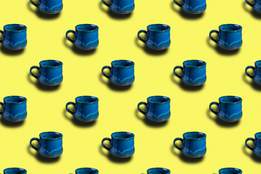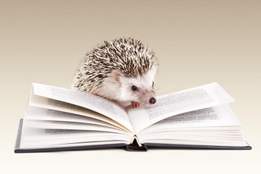
English: It Is Full of Words for Drunk People
Thomas Nashe’s Pierce Penilesse, a satirical pamphlet written in 1592, contains within it a lovely little list detailing the eight different kinds of drunkards. We know what you’re thinking: "But I haven’t even gotten halfway through memorizing the 200-odd words for drunk that Benjamin Franklin published in the early 18th century ... I do not need another historical list of inebriated vocabulary."
We feel your pain. The English language contains an absurd number of words for “drunk,” and sometimes it can feel like you’ll never be able to keep track of them all. That’s ok - this list is short, Nashe has a writing style that’s light enough that you’ll forget you might be doing something educational, and this will not be on the test.
A number of later writers were so fond of Nashe’s treatment of drunkards that they decided to flatter the satirist by stealing his idea. In 1652 the acronymic D. N. published The Figure of Six, an ostensibly humorous collection of things arranged in groups of six, in which he included “Six sorts of Drunkards,” most of which were simply lifted from Nashe (“a sowish Drunkard, a sheepish Drunkard, a loving Drunkard, a goat Drunkard an a pish Drunkard, and a Fox Drunkard”).
A writer named Martin Parker liked this so much that he wrote a book around the same time, titled The Figure of Seaven, in which similar things were (you guessed it!) placed in groups of seven. Parker’s drunks were also taken almost verbatim from Nashe’s list. Thomas Young, writing in 1617, was perhaps the first one to plagiarize this concept, although he added a 9th kind of drunk (bat drunk, which is the kind of drunk who “delights in secret places and flies by night: so they will drinke priuately, and chiefely in the night”).
However much all these writers may have copied Nashe’s list, they failed to copy his inimitable style and phrasing. And so, as a public courtesy, we have decided to offer our readers a slideshow of the great satirist’s eight kinds of drunkards, with additional commentary.
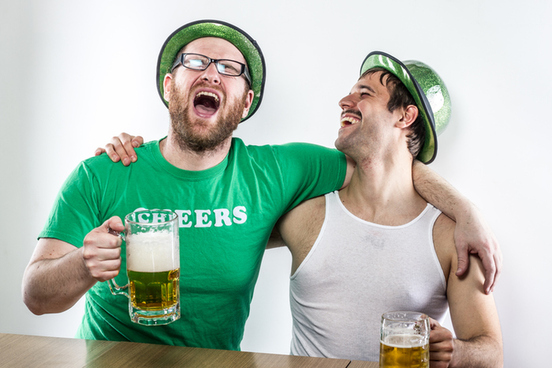
Ape Drunk
”The first is Ape drunke, and he leapes, and sings, and hollowes, and daunceth for the heauens.”
A number of the animals referenced in Nashe’s list have found themselves commonly used in compound nouns, or functioning as a figurative adjective. Ape, however, appears to have largely escaped this fate. It does come up in the expression go ape (“to become very excited or angry”), which is somewhat similar in meaning to the actions of the drunk described by Nashe but as this is not recorded until the middle of the 20th century it is unlikely to have a connection to ape drunk.
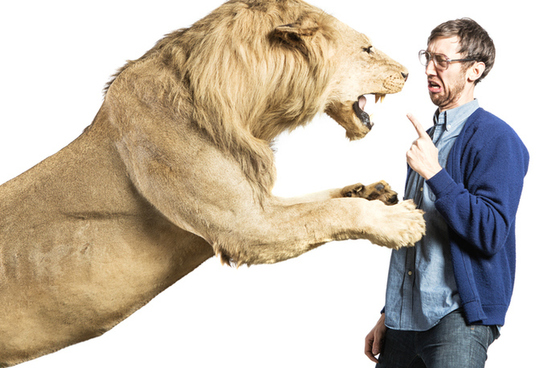
Lion Drunk
”The second is Lion drunke, and he flings the pot about the house ... breakes the glasse windowes with his dagger, and is apt to quarrell with any man that speaks to him.”
When considering how often one encounters another person who might best be described as “drunk and mean,” it is rather odd that we should have lost more than one useful ways of referring to such a person in our language. For in addition to Nashe’s lion drunk a number of Scottish dictionaries make note of barley-hood, which is an episode of bad temper brought about by imbibing. A variant of this word, barlikhood, is memorably defined in the glossary to a collection of British plays from the late 18th century: “a fit of drunken angry passion.”

Swine Drunk
”The third is Swine drunke, heauy, lumpish, and sleepie, and cries for a little more drinke, and a fewe more cloathes.”
Some people think that swine have received a bad rap, what with the whole secondary meaning of “contemptible person,” large portions of the world’s population considering them unclean animals, and the general pejorative meanings of the word pig; others think that they likely don’t care much, save to be relieved that some people do not want to eat them. It is unclear to most lexicographers what connection exists between the members of the family Suidae and Nashe’s idea that a swine drunk wants a “fewe more cloathes.”
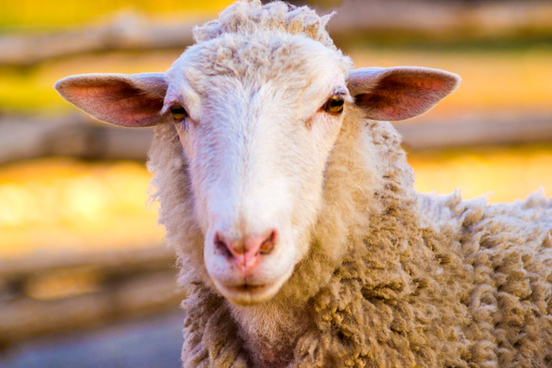
Sheep Drunk
”The fourth is Sheepe drunke, wise in his own conceipt, when he cannot bring foorth a right word.”
Sheep are not an animal that is traditionally associated with drunkenness, or misbehavior of any sort, come to think of it. The word for this particular animal has been used to indicate that a person, or group or people, is timid, meek, or in some other fashion unassertive. If you would like to describe someone as sheepish, meaning “resembling a sheep”, but would like to not have to explain that you don’t mean the sense of sheepish that is tied to embarrassment, you may use the word ovine.

Maudlin Drunk
”The fifth is Mawdlen drunke, when a fellowe will weepe for kindnes in the midst of his Ale, and kisse you, saying, By God, Captaine, I loue thee, goe thy wayes thou dost not thinke so often of me as I do of thee; I would (if it pleased God) I could not loue thee so well as I doo; and then he puts his finger in his eye, and cries.”
We have all met the maudlin drunk; in fact, the word maudlin began with the express meaning of “drunk enough to be emotionally silly,” and later took on the sense of “effusively sentimental.” The word comes from Mary Magdalene, the name of the woman who is often thought to be represented as washing Jesus’ feet with her tears. Through this representation (which some people think is not necessarily Mary Magdalene) the name came to be associated with tears, teariness, and a general state of lachrymosity.
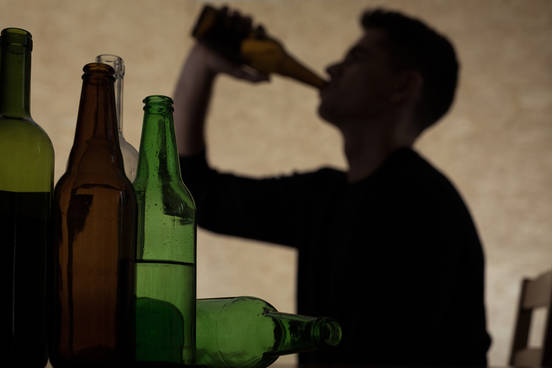
Martin Drunk
”The sixt is Martin drunke, when a man is drunke, and drinkes himselfe sober ere he stirre”
There are a number of animals which are called martin; the name is applied to a wide variety of swallows and flycatchers (these are birds), to a kind of female calf that is born simultaneous with a male (and which is usually sterile and sexually imperfect), and also was formerly used to refer to an ape or monkey. Nashe’s martin drunk most likely is concerned with the last of these three possibilities. The Oxford English Dictionary, one of the few that records any of these kinds of drunkards, suggests that the martin in question was chosen by Nashe as a means of referring to Martin Marprelate, the pseudonym of a rival pamphleteer in the late 16th century.

Goat Drunk
"The seventh is Goate drunke, when in his drunkennes, he hath no minde but on Lechery."
The goat has long been associated with lechery, so it it not surprising that Nashe’s list should reserve this animal for the category of “drunk and horny.” Goat itself has had the meaning of “lecher” since the late 16th century, and a number of words meaning “resembling a goat” (such as rammish and hircine) have also taken on the meaning of “lustful.”
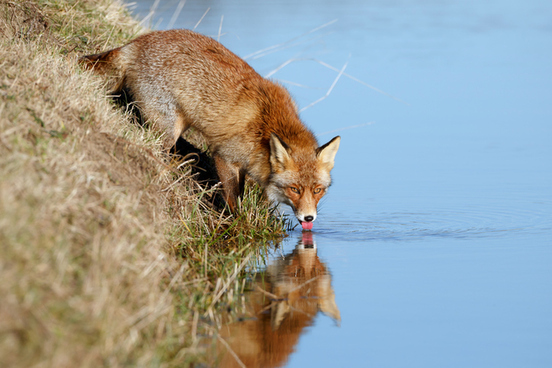
Fox Drunk
“The eighth is Foxe drunke, when he is craftie drunke, as many of the Dutchmen bee, that will never bargaine but when they are drunke.”
Many of us are somewhat familiar with the extended uses of fox, often implying slyness or craftiness, and which range from being used in expressions (crazy like a fox) to simply being on of the figurative meanings of the word itself (“a clever crafty person”). Less commonly known is the sense of fox (which is now somewhat archaic), meaning “drunk” (although, it should be noted, without any connotations of craftiness). And even less commonly known than this is that Dutchmen will not bargain unless they are drunk … we think Nashe may have made this one up.
